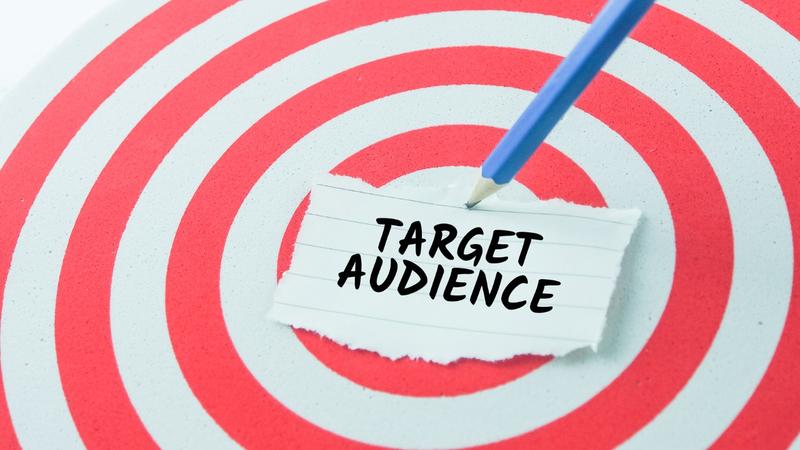Transcreation explained
Never heard of the term 'transcreation' or unsure what it means? Matthew Popplewell sheds some light on this fascinating craft.
What is transcreation?
Transcreation is a portmanteau (mash-up) of the words 'translation' and 'creation'. In other words, transcreation is a combination of translation and the creation of brand new text, usually with the aim of convincing the reader to align with a cause/mission or buy a product or service.
Given the persuasive focus of transcreation, you could also describe it as a blend of translation and copywriting (the writing of text for advertising and marketing purposes).
Finally, the task of transcreation is carried out based on a brief (background information and instructions). The client should make the brief as informative as possible, specifying the purpose of the text required, the target audience, the preferred tone of voice, the desired reader response, brand values, their product’s unique selling point, the media in which the copy will appear, the format, any images to be included, and a contact for queries.
So, with the above in mind, you could define transcreation as taking a persuasive text in one language and producing an equivalent persuasive text in another language by employing translation and copywriting skills on the basis of a client brief.
While the source text is thoroughly consulted and usually translated in rough draft form, the transcreated text may end up being quite different to it, with new elements added and original elements removed to produce a piece of copy that fulfils the brief.

When do you need transcreation?
According to leading transcreator Nina Sattler-Hovdar in her book 'Get fit for the future of transcreation: A handbook on how to succeed in an undervalued market', transcreation is suitable for any marketing/communications materials that have a major impact on your company, brand or organisation’s reputation and sales. These include advertisements, headlines, slogans, blog posts, website copy, newsletters, magazines and corporate communications.
When you need to communicate with speakers of another language, whether company employees or potential customers in your own or another country, then cultural and linguistic differences can be so great that a translation just won’t cut it.
You may have even worked with a copywriter on your original materials, in which case you need someone with the same skills (plus translation expertise) to produce your copy in the language of your new target audience.
Linguistic differences, such as sentence structure and wordplay, are one thing, but cultural factors also play a huge role in how a message is transcreated for a new audience.
For example, Brits tend to favour storytelling and informality in marketing, Germans typically want facts and figures to demonstrate what a product or service can do, and Spaniards on the whole prefer a less pushy approach when being sold to and display a strong affinity for familiar brands.
These are generalisations, of course, but having an awareness of the differences in mentality between cultures is essential to the transcreation process.
Examples of transcreation
Let’s look now at two examples of transcreation.

In the first, German confectionary firm Haribo’s famous rhyming German slogan 'Haribo macht Kinder froh und Erwachsene ebenso!' (literally 'Haribo makes kids happy, and grown-ups too!') has been transcreated into numerous languages around the world. We say transcreated here, as a direct translation wouldn’t rhyme in other languages (as in the case of the literal English translation above).
The actual English slogan, 'Kids and grown-ups love it so, the happy world of Haribo!', makes the children and adults, rather than Haribo, the subject of the sentence (the ones performing the action). In so doing, it manages to express the same essential idea in rhyming form.
The Spanish slogan 'Vive un sabor mágico, ven al mundo Haribo!' (literally “Experience a magical flavour – come to the world of Haribo!”) moves away somewhat from the original German content, omitting kids and adults and introducing the concept of “magical flavour”. Still retaining a degree of rhyme between “mágico” and “Haribo”, the slogan reads smoothly in Spanish.
In the second example, we have the Spanish car SEAT Leon 2020, advertised in Spain with the slogan 'Nuevo SEAT León – Más León que nunca'.
To understand the wordplay employed here, you need to know that the car model 'Leon' (accented in Spanish, but not in English) is named after the Spanish city of León, and that 'león' (albeit with a lower case 'l') also means “lion” in Spanish. So, the slogan literally translates as both “The new SEAT Leon – More León than ever” and “The new SEAT Leon – More lion than ever”.
Clearly, the lion wordplay cannot be expressed in a pithy way in English, and so the actual English slogan, 'The new SEAT Leon – Choose brighter', is very different to the Spanish one on the surface. However, it still incorporates a sense of lion-like boldness with the word “brighter”.
The German slogan for the same car, 'Kraftvoll. Selbstbewusst. Connected.', literally translates as 'Powerful. Confident. Connected.' Aside from using English ('Connected'), a frequent practice in German advertising, it also conveys a similar boldness and power to the Spanish original.
In both the examples above, it was necessary to move away from a literal translation to get across the essential message for a different market. In the second example (SEAT), the English and German slogans are markedly different to the Spanish, yet still succeed in communicating its sense of boldness.
If you’d like more illustrations of transcreation in practice, experienced transcreator Claudia Benetello provides several fascinating examples from English into Italian.

How much does transcreation cost?
The cost of transcreation is the cost of the time it takes to come up with the final copy.
A transcreator will produce a draft translation, consult your brief, brainstorm ideas and come up with several slogan options. They might also need to provide you with back translations (translation back into your source language, that is, the language of your original copy, for comparison purposes).
They will then most likely offer two rounds of revision of the copy, based on your feedback, and may wish to sign off on the final proof as good to print (after all, errors can creep into the formatting process, especially where desktop publishers are unfamiliar with the language into which your original text has been transcreated).
This process is essential to producing top-quality target-language copy for your company or organisation that resonates with your target audience. Transcreation should thus be seen as an essential business investment, rather than an expense. How much sales revenue will the final advert or promotional text generate for you in the long run?
Cutting corners here is likely to lead to errors and could harm the quality of your copy. You only need look at examples of translation gone wrong to appreciate this.
Take US brewer Coors, for instance. The company translated its former slogan, 'Turn it loose', literally into Spanish as 'Suéltelo todo', inadvertently telling its customers in Spain to 'get diarrhoea'.
Another example is when US fast food chain KFC erroneously translated its slogan 'Finger Lickin’ Good' into Chinese as 'Eat your fingers off'.
As you can imagine, the two companies will have had to pay more to rectify these blunders than they would have spent if they'd engaged high-quality professional transcreation services in the first place!
What to look for in a good transcreator
Since transcreation involves a combination of translation and copywriting skills, a good transcreator will be excellent at both, as evidenced by such things as testimonials, professional memberships and portfolios.
A good transcreator will also keep up to date with developments and trends in their target language and culture. Ideally, they will live in the target market country you wish to reach, but if not, will use all available media and information channels to stay current with developments there. In short, transcreators are experts on your target market.
Additionally, a good transcreator will be communicative and keen to learn about your organisation, brand or service. They will clarify any doubts and work closely with you to ensure that the final copy represents the real you/your organisation’s DNA, albeit adapted for a different market.
Finally, a good transcreator will fulfil a consultancy role, advising you on how best to reach your target audience and not being afraid to tell you, respectfully of course, if they think you’re missing something or heading in the wrong direction with your target market strategy.
Ultimately, the transcreator’s livelihood depends on them communicating your message as effectively as possible in the target language, so they’re very much invested in your success!
Next steps
You hopefully now have a better idea of what transcreation involves and you might even be ready to contact a transcreator to discuss a potential project. Or you may first wish to explore the topic in more detail.
In the former case, you can search for a translator on the ITI website, adding the keyword 'transcreation' or 'transcreator' to the filter. You should then, in many cases, be able to find an individual in your required language combination with both translation and copywriting expertise.
Or, if you first wish explore transcreation further, Nina Sattler-Hovdar’s book 'Get fit for the future of transcreation: A handbook on how to succeed in an undervalued market' covers the subject both comprehensively and engagingly.






